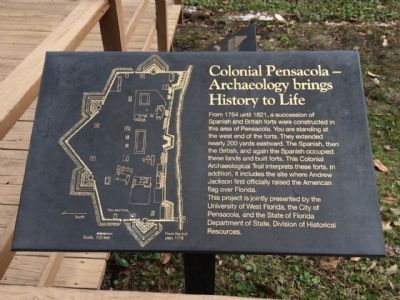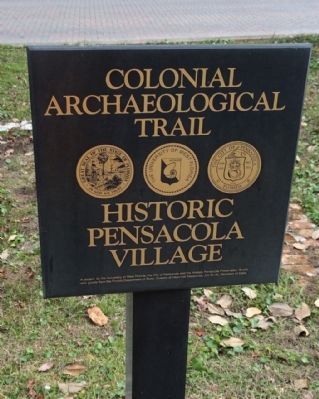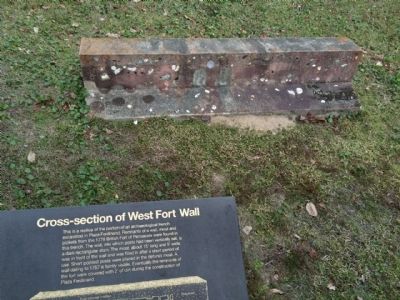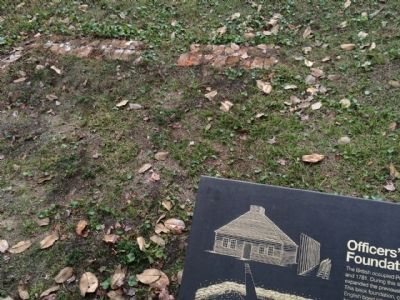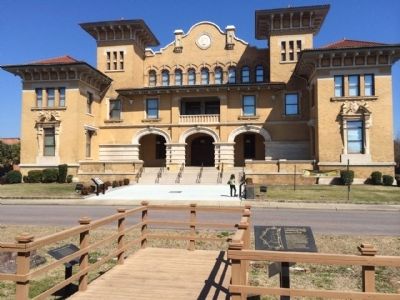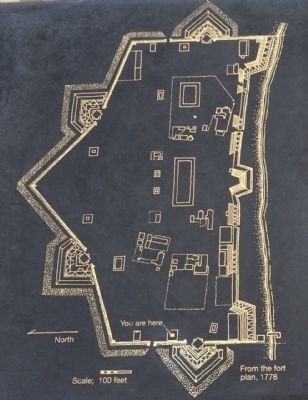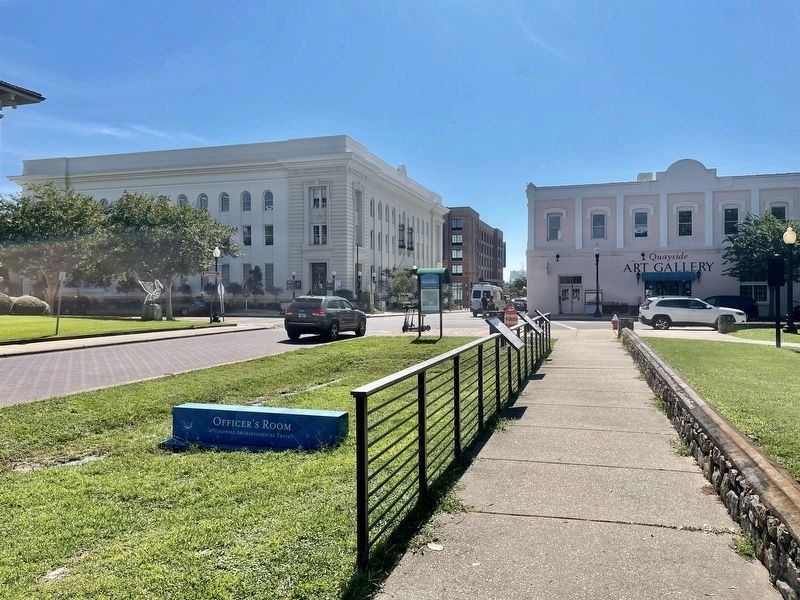Pensacola in Escambia County, Florida — The American South (South Atlantic)
Colonial Pensacola - Archaeology Brings History to Life
Inscription.
From 1754 until 1821, a succession of Spanish and British forts were constructed in this area of Pensacola. You are standing at the west end of the forts. They extended nearly 200 yards eastward. The Spanish, then the British, and again the Spanish occupied these lands and built forts. This Colonial Archaeological Trail interprets these forts. In addition, it includes the site where Andrew Jackson first officially raised the American flag over Florida.
This project is jointly presented by the University of West Florida, the City of Pensacola, and the State of Florida Department of State, Division of Historical Resources.
Erected by the City of Pensacola, the University of West Florida & the Historic Pensacola Preservation Board.
Topics and series. This historical marker is listed in these topic lists: Colonial Era • Exploration • Forts and Castles • Settlements & Settlers. In addition, it is included in the Former U.S. Presidents: #07 Andrew Jackson series list. A significant historical year for this entry is 1754.
Location. Marker has been permanently removed. It was located near 30° 24.515′ N, 87° 12.811′ W. Marker was in Pensacola, Florida, in Escambia County . Marker could be reached from the intersection of South Jefferson Street and East Zarragossa Street. Touch for map. Marker was at or near this postal address: 330 South Jefferson Street, Pensacola FL 32502, United States of America.
We have been informed that this sign or monument is no longer there and will not be replaced. This page is an archival view of what was.
Other nearby markers. At least 8 other markers are within walking distance of this location. Officer's Room and Kitchen (here, next to this marker); Trenches & Trous-de-Loup (here, next to this marker); A Spanish Town (a few steps from this marker); Finding 1821 (a few steps from this marker); Votes for Women (within shouting distance of this marker); Gen. Andrew Jackson (within shouting distance of this marker); William Dudley Chipley (within shouting distance of this marker); Old Escambia County Court of Record Building (1912-1978)/Pensacola Little Theater-Pensacola Cultural (within shouting distance of this marker). Touch for a list and map of all markers in Pensacola.
Related marker. Click here for another marker that is related to this marker.
Also see . . . Colonial Archaeological Trail. (Submitted on January 7, 2015, by Mark Hilton of Montgomery, Alabama.)
Additional commentary.
1. Markers replaced with interpretive markers.
All the markers on this page have been replaced with newer interpretive markers, in some cases combining information and adding new information. The whole area has been renovated and no longer looks the same.
— Submitted October 10, 2021, by Mark Hilton of Montgomery, Alabama.
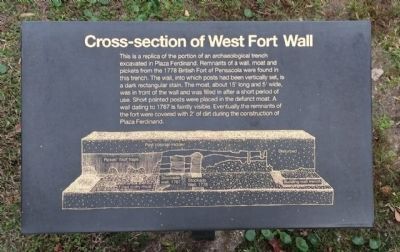
Photographed By Mark Hilton, January 1, 2015
3. Cross-section of West Fort Wall
This is a replica of the portion of an archaeological trench excavated in Plaza Ferdinand. Remnants of a wall, moat and pickets from the 1778 British Fort of Pensacola were found in this trench. The wall, into which posts had been vertically set, is a dark rectangular stain. The moat, about 15' long and 5' wide, was in front of the wall and was filled in after a short period of use. Short pointed posts were placed in the defunct moat. A wall dating to 1767 is faintly visible. Eventually, the remnants of the fort were covered with 2' of dirt during the construction of Plaza Ferdinand.
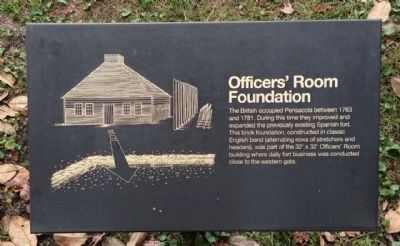
Photographed By Mark Hilton, January 1, 2015
5. Officers' Room Foundation
The British occupied Pensacola between 1763 and 1781. During this time they improved and expanded the previously existing Spanish fort. This brick foundation, constructed in classic English bond (alternating rows of stretchers and headers), was part of the 32' x 32' Officers' room building where daily fort business was conducted close to the western gate.
Credits. This page was last revised on October 10, 2021. It was originally submitted on January 7, 2015, by Mark Hilton of Montgomery, Alabama. This page has been viewed 721 times since then and 30 times this year. Photos: 1, 2, 3, 4, 5, 6, 7, 8. submitted on January 7, 2015, by Mark Hilton of Montgomery, Alabama. 9. submitted on October 10, 2021, by Mark Hilton of Montgomery, Alabama.
